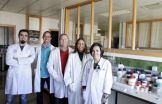(Press-News.org) This news release is available in German.
According to a current study from the University of Cambridge, software developers are spending about the half of their time on detecting errors and resolving them. Projected onto the global software industry, according to the study, this would amount to a bill of about 312 billion US dollars every year. "Of course, automated testing is cheaper", explains Andreas Zeller, professor of Software Engineering at Saarland University, as you could run a program a thousand times without incurring any charges. "But where do these necessary test cases come from?", asks Zeller. "Generating them automatically is tough, but thinking of them yourself is even tougher".
In cooperation with the computer scientists Nikolas Havrikov and Matthias Höschele, he has now developed the software system "XMLMATE". It generates test cases automatically and uses them to test the given program code automatically. What is special about it is that the only requirement the program to be tested has to meet is that its input must be structured in a certain way, since the researchers use it to generate the initial set of test cases. They feed them to the so-called genetic algorithm on which the testing is based. It works similarly to biological evolution, where the chromosomes are operating as the input. Only the input that covers a significant amount of code which has not been executed yet survives. As Nikolas Havrikov explains their strategy: "It is not easy to detect a real error, and the more code we are covering, the more sure we can be that more errors will not occur." Havrikov implemented XMLMATE. "As we use the real existing input interface, we make sure that there are no false alarms: Every error found can also happen during the execution of the program", adds Zeller.
The researchers have unleashed their software on open source programs users are already working with in daily life. With their program they detected almost twice as many fatal errors as similar test methods that only work with randomly generated input. "But the best thing is that we are completely independent from the application area. With our framework, we are not only able to test computer networks, the processing of datasets, websites or operating systems, but we can also examine software for sensors in cars", says Zeller.
The computer scientists in Saarbrücken developed XMLMATE in the Java programming language. The input for the software to test is defined according to the description language XML, so the existence of a XML schema is helpful. Since XML is standardized and considered as a kind of world language between input formats, most of the programming input fits XMLMATE and if not, it can be quickly converted to do so with the corresponding tools.
INFORMATION:
Background information about computer science research at Saarland University in Germany
The Department of Computer Science represents the center of computer science research in Saarbrücken. Seven other worldwide renowned research institutes are close by the department: The Max Planck Institutes for Informatics and for Software Systems, the German Research Center for Artificial Intelligence (DFKI), the Center for Bioinformatics, the Intel Visual Computing Institute, the Center for IT Security, Privacy and Accountability (CISPA) and the Cluster of Excellence "Multimodal Computing and Interaction".
More Information:
http://www.st.cs.uni-saarland.de/testing/xmlmate/
Further Questions:
Matthias Hoeschele
Software Engineering Chair
Saarland University
Phone: +49 (0)681 302-70987
Email: hoeschele@cs.uni-saarland.de
Professor Andreas Zeller
Software Engineering Chair
Saarland University
Phone: +49 (0)681 302-70971
Email: zeller@cs.uni-saarland.de
Edited by:
Gordon Bolduan
Research Communication
Competence Center for Computer Science
Phone: +49 (0)681 302-70741
Email: bolduan@mmci.uni-saarland.de
Copied from nature: Detecting software errors via genetic algorithms
2014-03-05
ELSE PRESS RELEASES FROM THIS DATE:
New findings on neurogenesis in the spinal cord
2014-03-05
Research from Karolinska Institutet in Sweden suggests that the expression of the so called MYC gene is important and necessary for neurogenesis in the spinal cord. The findings are being published in the journal EMBO Reports.
The MYC gene encodes the protein with the same name, and has an important role in many cellular processes such as proliferation, metabolism, cell death and the potential of differentiation from immature stem cell s to different types of specialized cells . Importantly it is also one of the most frequently activated genes in human cancer.
Previously ...
Barbie could dampen a young girl's career dreams
2014-03-05
Although the marketing slogan suggests that Barbie can "Be Anything," girls who play with this extremely popular doll see fewer career options available to themselves compared to boys. So say Aurora Sherman of Oregon State University and Eileen Zurbriggen of the University of California, Santa Cruz, who conducted one of the first experiments on how playing with fashion dolls influences girls' perceptions about their future occupational options. The findings, which the psychologists describe as "sobering," are published in Springer's journal Sex Roles.
Sherman and Zurbriggen ...
Technique patented that opens the door to the development of new drugs against osteoporosis
2014-03-05
This news release is available in Spanish.
Scientists from the University of Granada (UGR) have opened the door to the development of new drugs against osteoporosis, one of the most common chronic illnesses in the world, especially among women 65 or over.
The researchers, from the University of Granada's Department of Physio-Chemistry, have patented a new methodology that allows specialists to measure – none-invasively and in real time – the concentration of phosphate ions inside living cells. The scientific importance of measuring phosphate ions is based precisely ...
Banana plant fights off crop's invisible nemesis: Roundworms
2014-03-05
The banana variety Yangambi km5 produces toxic substances that kill the nematode Radopholus similis, a roundworm that infects the root tissue of banana plants – to the frustration of farmers worldwide. The finding bodes well for the Grande Naine, the export banana par excellence, which is very susceptible to the roundworms.
The parasitic nematode Radopholus similis is the invisible nemesis of the banana plant, says Professor Dirk De Waele (Laboratory for Tropical Crop Improvement, KU Leuven), a co-author of the study: "This roundworm infects banana crops worldwide. The ...
Patients' stories used to improve care on wards
2014-03-05
A research project led by Oxford University is showing how patient experiences can be used to improve healthcare – not through targets and surveys, but by getting doctors, nurses and patients talking together about care on the ward.
The new approach has been used in pilot projects at two UK hospital trusts – Royal Brompton & Harefield NHS Foundation Trust in London and the Royal Berkshire in Reading. Videos of patients talking about care they received at various hospitals are used to trigger a discussion between NHS staff, managers, patients and family members about the ...
Program to move families out of high-poverty neighborhoods has mixed results
2014-03-05
A program designed to move families out of high-poverty neighborhoods resulted in reduced rates of depression and conduct disorder among girls, but increased rates of depression, post-traumatic stress disorder (PTSD) and conduct disorder among boys, according to a study published in the March 5 issue of JAMA.
Prof. Jens Ludwig, one of the study's authors, said this was a follow-up long-term analysis of families participating in the Moving to Opportunity residential-mobility demonstration sponsored by the U.S. Department of Housing and Urban Development. Ludwig is the ...
NASA's Hubble finds life is too fast, too furious for this runaway galaxy
2014-03-05
The spiral galaxy ESO 137-001 looks like a dandelion caught in a breeze in this new Hubble Space Telescope image.
The galaxy is zooming toward the upper right of this image, in between other galaxies in the Norma cluster located over 200 million light-years away. The road is harsh: intergalactic gas in the Norma cluster is sparse, but so hot at 180 million degrees Fahrenheit that it glows in X-rays.
The spiral plows through the seething intra-cluster gas so rapidly – at nearly 4.5 million miles per hour — that much of its own gas is caught and torn away. Astronomers ...
UW researchers use Lumosity to identify early cognitive impairment in cirrhosis patients
2014-03-05
San Francisco, Calif. – March 5, 2014 – A new study from the University of Washington has found that performance on Lumosity games can distinguish between patients with cirrhosis of the liver, pre-cirrhotic patients, and healthy controls. The study used Lumosity games as psychometric tests to detect subtle cognitive impairments in patients with cirrhosis. The study is published in the March issue of the American Journal of Gastroenterology.
Studies have found that an estimated 60-80 percent of cirrhosis patients experience cognitive dysfunction, which can range from ...
Changes in hospital orders increase pertussis immunization rates
2014-03-05
LOS ANGELES – (March 5, 2014) – Changing the hospital orders for women who have just delivered a child led to a 69% increase in the new mothers' pertussis vaccination rate, providing protection for themselves and their newborns against the disease, commonly known as whooping cough, according to a study in the March issue of the American Journal of Obstetrics & Gynecology.
Sylvia Yeh, MD, a Los Angeles Biomedical Research Institute (LA BioMed) lead researcher and corresponding author of the study, said it is the first to compare immunization rates among two hospitals: ...
To avoid very high pension ages, enable more to work
2014-03-05
The new research, which was published in the journal Demographic Research, shows that increasing labor force participation by as little as 1 or 2 percentage points could allow pension ages to be reduced by one year without increasing the burden on the working population.
"Coping with aging populations is a challenge for most developed countries," says IIASA population expert Sergei Scherbov, who co-led the study with Warren Sanderson, a researcher at IIASA and Stony Brook University.
In Europe and many other areas of the developed world, birth rates have dropped while ...





